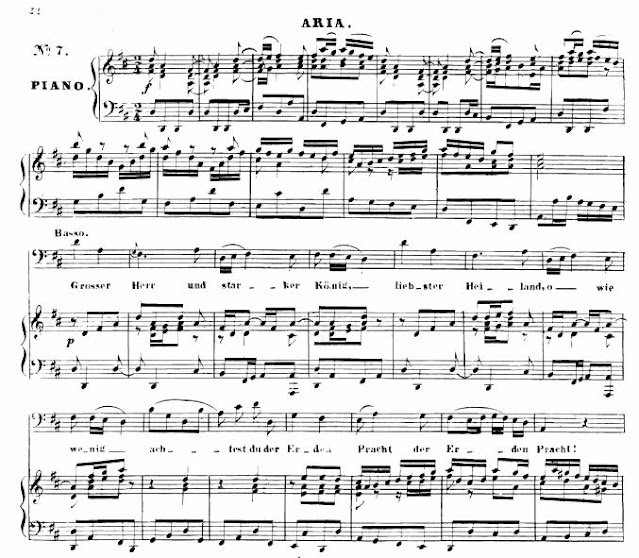Beethoven's String Quartet Nr. 15 in a-minor
As we all know, Beethoven wrote 9 symphonies. Those of you who read my post about his Sonata No. 30 know that he wrote 32 of them. How many of you are familiar with his 16 string quartets? I have only recently become a string player myself, but I'll bet all of you who already play a string instrument know them.
They are often played in chamber music concert settings. But chances are that you don't go to such concerts if you don't play an instrument that is often played in such settings. I don't want you to miss out on a beautiful piece of music, though, so I'm going to present to you the third movement of the Quartet in a-minor. I love slow movements - especially Beethoven's - and this one is no exception. This Molto Adagio movement is titled "Heiliger Dankgesang eines Genesenen an die Gottheit; in der lydischen Tonart". That's a "Song of thanks to the Deity from a convalescent in the lydian mode". It sounds better in German.
He wrote this quartet two decades after going deaf and two years before he died. He had finished writing symphonies, concerti and sonatas and concentrated most of his remaining energy on string quartets. At the time he was working on Op. 132, he had just recovered from a painful stomach ailment, so the third movement of this quartet is a personal word of gratitude.
When I first heard this movement, I believe I was going through a break-up of a long-term relationship. The beginning of this slow movement (Molto adagio) allowed me to breathe, to come to terms with my sadness, and to ponder the future. Then, unexpectedly, the window opened in this piece (Neue Kraft fühlend - feeling new-born strength) and a bird flew in on a gust of fresh air! I knew I was going to be healed! And just for good measure, Ludwig repeats the gust with gusto, yet ends (Molto adagio, Mit innigster Empfindung - with most profound feeling) by allowing us to view the Earth from the heavens above. It's very nice of him to do that.
As is so often the case, the first recording I heard of it, by the Melos Quartet of Stuttgart, became my reference. When I heard another string quartet play it in Freiburg, I felt they rushed the third movement and so I was very disappointed. Since then, I think I've learned to open myself up to new interpretations.
In 2001 I was privileged enough to be invited to attend a private lecture series on Beethoven's String Quartets in the home of a German teacher an amateur cellist, Gerd Indorf. The previous year he had gone through the Mahler symphonies, and that was about the greatest thing I'd ever experienced, so I knew this would be good, too. He told the 20 of us about the genesis of the quartets, about how, for example, Beethoven copied out all of Mozart's String Quartets before attempting to write his own. Drawing on many sources, Gerd mixed stories from Beethoven's life with various recordings, critically appraising each one. He gathered both the Mahler and the Beethoven lectures in book form and published them. I have the Mahler, but the Beethoven seems to be out of print. Gerd's reference recording of the complete quartets at that time was the collection by the Emerson Quartet. And it is smashing! Here is an interpretation by one of the top ensembles recording today, the Quatour Èbène, who clock in at 21:00 minutes for this movement - that's molto adagio! They are touring the globe, recording the Beethoven cycle in various concert halls for their collection - quite an interesting approach!
Since picking up the violin earlier this year, the first string music I printed out was this heavenly movement from Op. 132. Playing the adagio parts myself made me super appreciative of the artistry other violinists practice when playing this music. Just because it is slow does not mean it is easy!
While doing some research for this post, I ran across a very interesting article that is wonderfully written from the personal perspective of a professional violist, who plays in the Pacifica Quartet. I really can't imagine a more informative and well-written introduction to this quartet. Read it if you have time! A public comment on the article seems like a good way to end my scribblings here:
The Lydian mode was associated from ancient times with healing; there is evidence that Beethoven believed in the healing power of music. It took me years before I had the patience to submit myself to the prolongation and virtual stopping of time that the third movement represents. Beethoven truly cracked the code, tuned into a different universe and by the time he was engaged in these late quartets, he gave us a sublime spiritual experience from another dimension. Perhaps that was the purpose of his deafness. His eventual acceptance of this hardship turned him inward, to sounds only he could hear.




Comments
Post a Comment